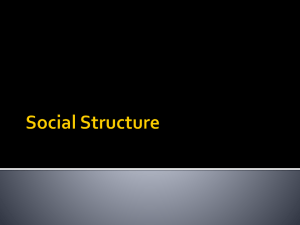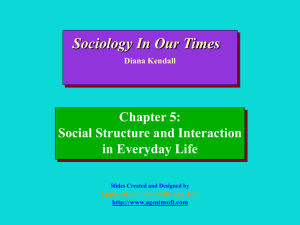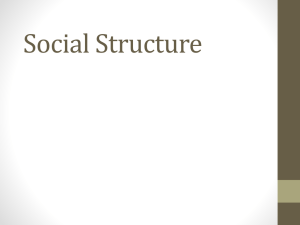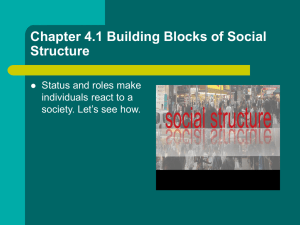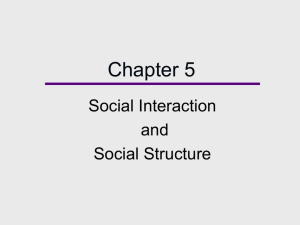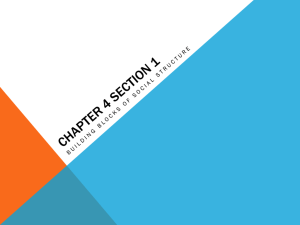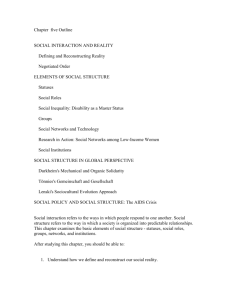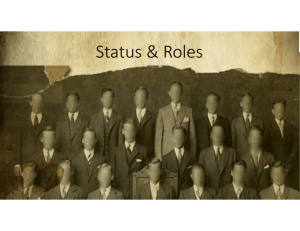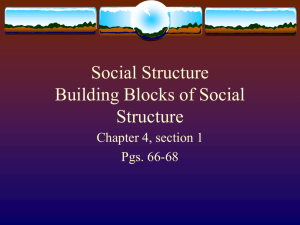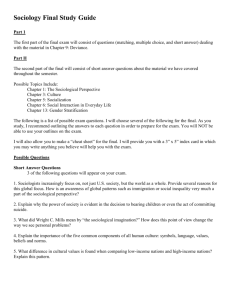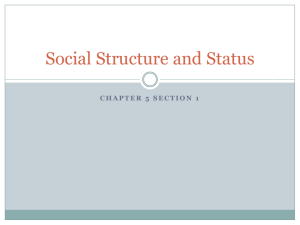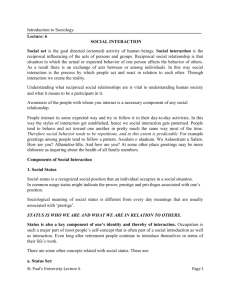Social Structure and Social Interaction
advertisement
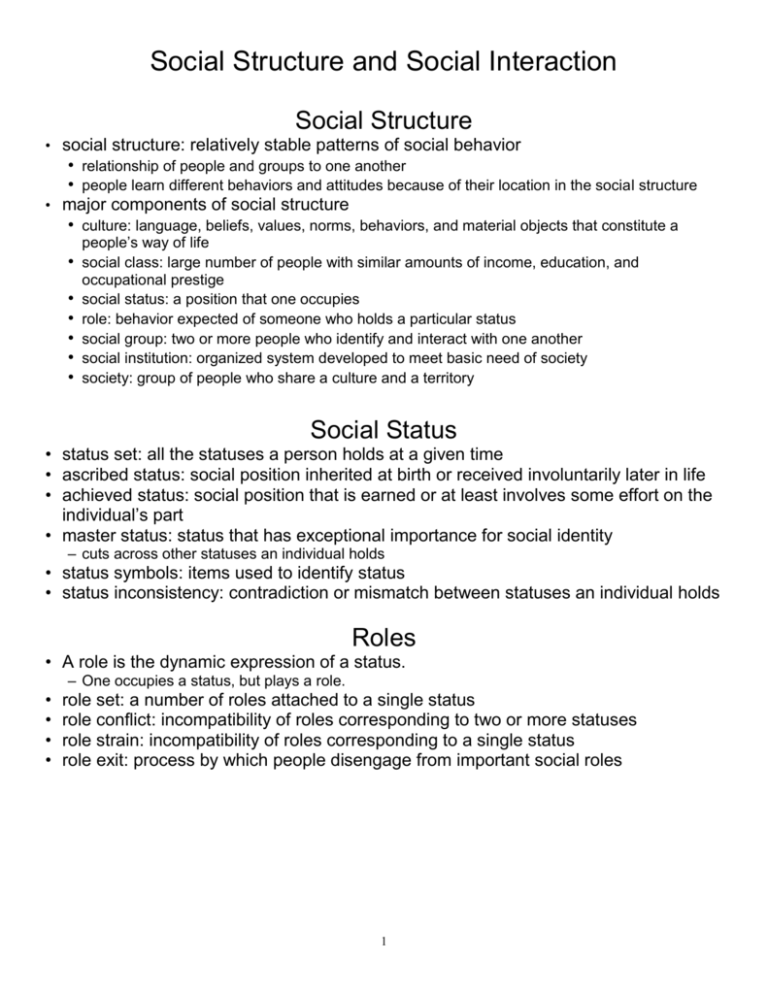
Social Structure and Social Interaction Social Structure • social structure: relatively stable patterns of social behavior • relationship of people and groups to one another • people learn different behaviors and attitudes because of their location in the social structure • major components of social structure • culture: language, beliefs, values, norms, behaviors, and material objects that constitute a people’s way of life • social class: large number of people with similar amounts of income, education, and occupational prestige • social status: a position that one occupies • role: behavior expected of someone who holds a particular status • social group: two or more people who identify and interact with one another • social institution: organized system developed to meet basic need of society • society: group of people who share a culture and a territory Social Status • status set: all the statuses a person holds at a given time • ascribed status: social position inherited at birth or received involuntarily later in life • achieved status: social position that is earned or at least involves some effort on the individual’s part • master status: status that has exceptional importance for social identity – cuts across other statuses an individual holds • status symbols: items used to identify status • status inconsistency: contradiction or mismatch between statuses an individual holds Roles • A role is the dynamic expression of a status. – One occupies a status, but plays a role. • • • • role set: a number of roles attached to a single status role conflict: incompatibility of roles corresponding to two or more statuses role strain: incompatibility of roles corresponding to a single status role exit: process by which people disengage from important social roles 1 Social Institutions • • • • • • • • • • family religion law politics economics education medicine science military mass media Societies • types of societies • hunting and gathering • horticultural and pastoral • agrarian • industrial • postindustrial • sociocultural evolution • changes that occur as a society gains new technology • four social revolutions • domestication of plants and animals • invention of the plow • invention of steam engine • invention of microchip • type of society in which we live is fundamental reason why we become who we are • sets boundaries around our lives • determines type & extent of social inequality that prevails • governs relationships between men/women, young/elderly, rich/poor, racial & ethnic groups What holds society together? • social cohesion: the degree to which members of a society feel united by social bonds • Durkheim: – mechanical solidarity: united by a sense of similarity • moral consensus – organic solidarity: united by interdependence based on specialized division of labor • functional interdependence • Tonnies: – gemeinschaft: intimate community – gesellschaft: impersonal association 2 Social Interaction in Everyday life • social construction of reality: process by which people shape reality through social interaction – use of background assumptions and life experiences to determine what is real • Hall: personal space – intimate, personal, social, public distances • Goffman: dramaturgical analysis – impression management • Garfinkel: ethnomethodology • study of how people make sense of everyday life; attempt to reveal background assumptions • Thomas Theorem: If people define situations as real, they are real in their consequences. 3
